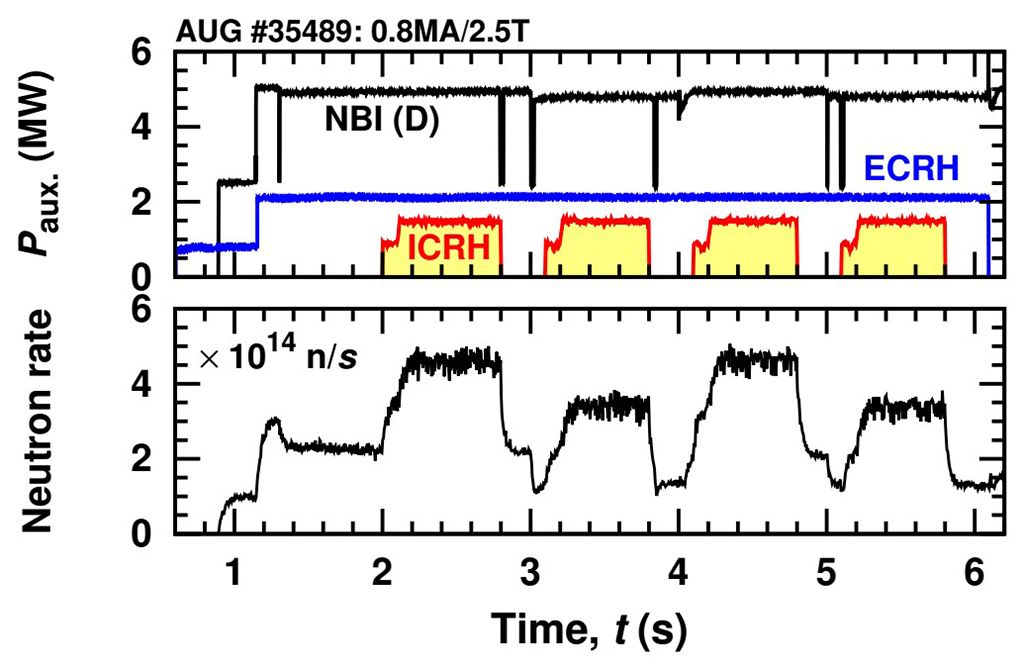Mervi Mantsinen – Barcelona Supercomputing Center – Centro Nacional de Supercomputación (BSC-CNS)
Ion Cyclotron Resonance Frequency (ICRF) heating plays an important role in many present day fusion experiments and it is one of the auxiliary heating methods that will be used in the next step device ITER. On the ASDEX Upgrade tokamak, novel applications of ICRF waves for plasma heating have become recently possible through the improved operating space of ICRF system and, in particular, its extended frequency range [1]. They have been instrumental for the experiments using third harmonic ICRF heating of neutral beam injected deuterons for fast ion studies and for further development of fast ion and neutron diagnostics. Figure shows a typical discharge with a more than two-fold increase of the neutron rate due to deuterium-deuterium fusion reactions involving ICRFaccelerated deuterons that has been achieved with this scheme in AUG. These developments have provided for the first time a means for simultaneous controlled variations and measurements of both the confined and the non-confined parts of ICRF-driven fast deuterium distribution on AUG.
